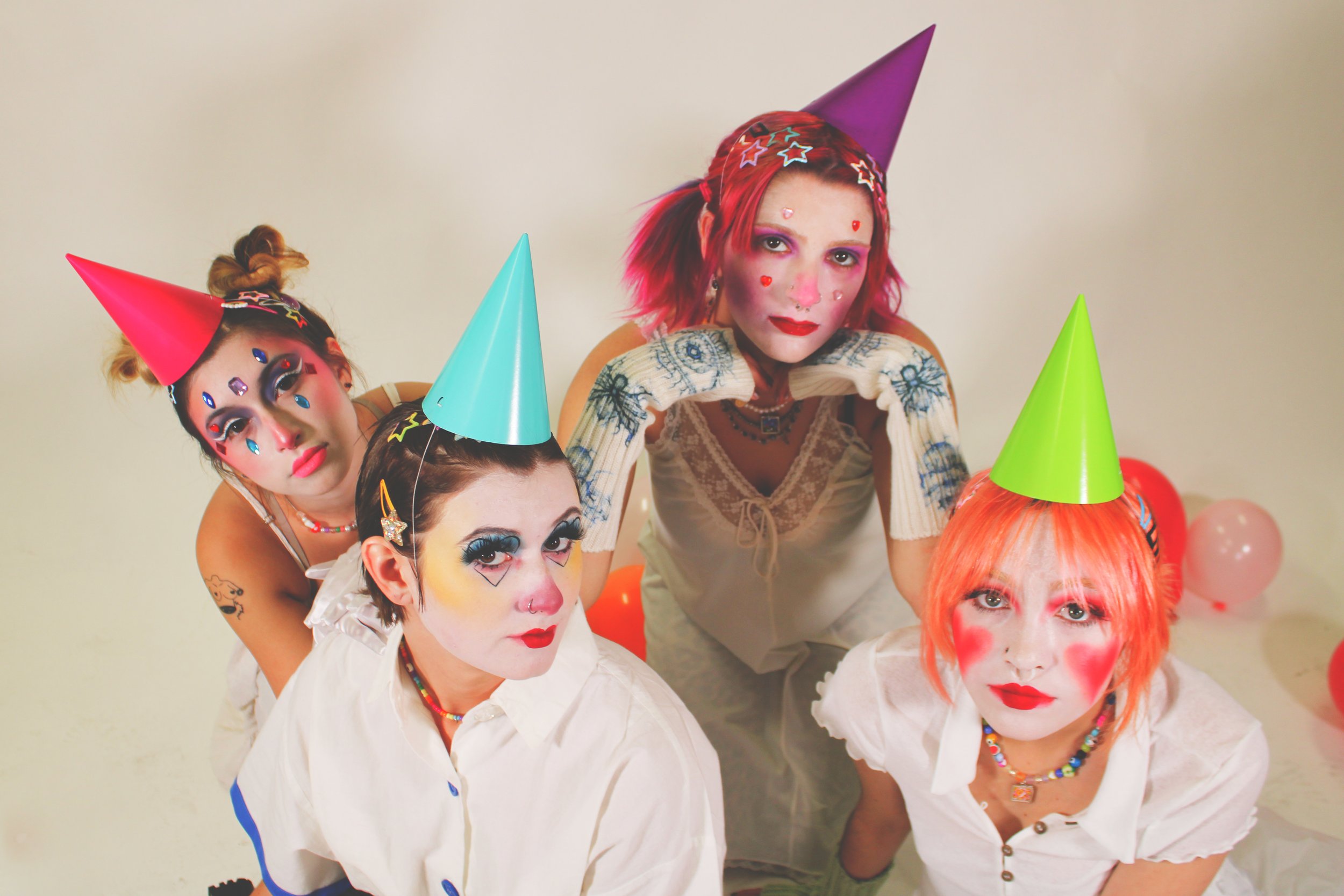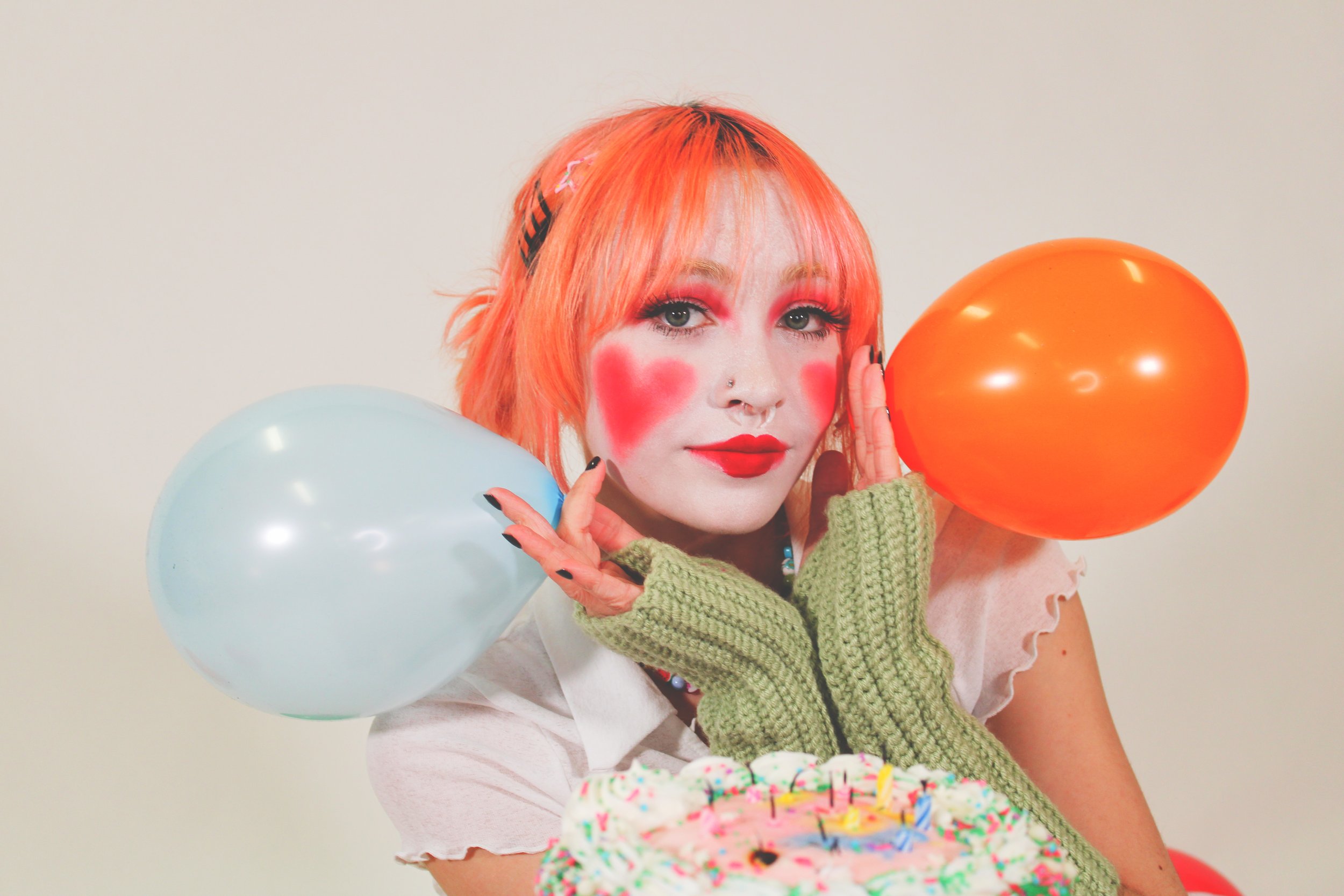Clowncore: A Look Into the Aesthetics of Clowns
Written and Styled by: Alexis Loftis
Photographed by: Britney Spangenberg
Models: Alex Wiley, Kyla Ghergherehchi, Georgia Horsch, and Sam Fleming
Clowncore has emerged as a trend on social media and on the runways. Maximalism is associated with this trend due to its fun colors, styles, and silhouettes. People tend to think of two descriptions when they think of clowns: bright, fun, and colorful or terrifying, horrible, and untrustworthy. Clowncore style is trying to combat that. Makeup is a very important tool of the aesthetic and can also provide the guise of androgyny because clowns are seen as genderless. Clowns are a symbol of the dramatics and an abstract of the people we do or do not want to be.
On the other side of the fun, bright, loving clown is an older aesthetic—the Pierrot clown. Typically, the Pierrot clown is seen performing with a bright white face, in all white clothing with a large silhouette, and sometimes a large frilled collar to match. If you are wanting to emulate this style, babydoll dresses are an amazing basic for this aesthetic and a nice layering piece being a larger silhouette. If you want to go even more casual a simple white slip dress will do, just add some funky makeup! The combination of the two sides of the clown aesthetic is a styling method that can be very captivating. Styling a big white dress, skirt, or pant and contrasting it with a pair of fun patterned tights and a colorful necklace with colorful makeup can really elevate a boring outfit to an exciting one.
Ultimately, clowncore is supposed to be a model of what we have been told to do and what not to do. We’ve been told clothes need to match and that it is essential that they do. This aesthetic throws that out the window and does not limit you in any way, allowing you to show your full creative ability. Clowncore is also celebrated in the LGBTQ+ community since it is seen as a genderless expression of character. It is also a very DIY-able fashion choice since there are no set rules. You can wear what you see fit and combine the philosophy of clowncore with your own fashion ethos to create a stylistic expression that is entirely your own. The history of this aesthetic has always been to entertain even if in a fearful, fun or depressing way. That's why there's not one way to represent clowncore; the aesthetic relies on the spectors emotions and how they feel when they see you.
The aesthetic of clowns has risen in recent years due to the difficulty we have had with being inside for so long. The pandemic has been hard on our collective mental well-being. Now, we are breaking out and exploring different ideas. Clowncore represents our overarching desire to let loose–we all want to have a little more color and fun in our lives.









